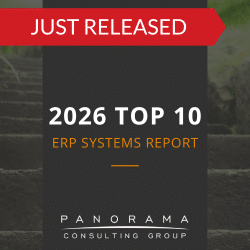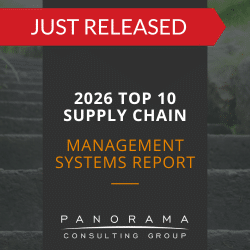When a critical software failure hits a global organization, the ripples can be felt far beyond the IT department.
Lufthansa, one of the world’s leading airlines, recently experienced such a failure, underscoring the dire consequences of lapses in software management and digital infrastructure.
This incident not only disrupted operations but also tarnished the airline’s reputation, leading to widespread customer dissatisfaction and significant financial losses.
Today, we will explore the lessons learned from Lufthansa’s software failure. This analysis aims to help businesses of all sizes understand the importance of robust IT systems, proactive risk management, and effective stakeholder communication.
Overview of Lufthansa’s Software Failure
Lufthansa’s software failure was a wake-up call for the airline industry and the broader corporate world. The failure occurred when an IT outage led to the grounding of hundreds of flights, affecting over 200,000 passengers.
This incident was not an isolated technical glitch but rather the result of a cascading failure within the airline’s complex IT infrastructure.
The software failure was traced back to a problem with Lufthansa’s data center in Frankfurt, where a critical component malfunctioned during routine maintenance. This caused a network disruption that impacted the airline’s ability to manage flight operations, including scheduling, passenger services, and aircraft maintenance. The result was a massive operational disruption that lasted for several hours, stranding passengers across the globe and causing a ripple effect of delays and cancellations.
A Failed Payroll System Implementation
Panorama’s Expert Witness team was retained to provide a forensic analysis and written report to the court regarding the failed implementation of a major software developer’s ERP/payroll system.
Lessons Learned From Lufthansa’s Software Failure
Lufthansa’s software failure offers several crucial lessons for businesses aiming to implement resilient IT systems and avoid catastrophic ERP failure.
These lessons are particularly relevant in today’s environment, where organizations are increasingly dependent on complex, interconnected digital systems.
1. The Importance of Redundant Systems and Failover Mechanisms
Lufthansa’s IT failure highlighted a critical weakness in its infrastructure: the lack of sufficient redundancy and failover mechanisms. When the primary data center experienced a malfunction, there was no immediate backup system capable of taking over, leading to a complete shutdown of the airline’s operations.
In any complex IT environment, relying solely on a single point of failure can be disastrous. Lufthansa’s failure was exacerbated by the absence of failover systems that could have mitigated the impact of the initial failure.
The Lesson
Organizations must ensure business continuity in the face of unexpected disruptions. Key strategies include:
- Disaster Recovery Planning: Develop comprehensive disaster recovery plans that include redundant data centers, cloud-based backups, and real-time failover capabilities. Regularly test these systems to ensure they can handle real-world scenarios.
- Load Balancing and Automatic Failover: Implement load balancing across multiple servers and data centers to distribute the workload and prevent over-reliance on a single system.
- Regular Infrastructure Audits: Conduct regular audits of your IT infrastructure to identify potential vulnerabilities and ensure that all components are functioning as expected. This proactive approach can help prevent minor issues from escalating into major failures.
2. The Critical Role of Effective Maintenance Procedures
The Lufthansa incident was triggered during routine maintenance work at the airline’s data center. This suggests that the maintenance procedures in place were either inadequate or not followed correctly, leading to a catastrophic failure.
Routine maintenance is important for keeping IT systems running smoothly, but it must be executed with precision and caution. Inadequate maintenance procedures can introduce new risks, as was the case with Lufthansa.
The Lesson
Organizations must treat maintenance activities as high-risk operations, requiring meticulous planning and execution. To avoid similar pitfalls, consider the following best practices:
- Maintenance Risk Assessment: Before any maintenance activity, conduct a thorough risk assessment to identify potential points of failure and develop contingency plans. This assessment should include input from all relevant stakeholders.
- IT Governance: Implement strict IT governance to ensure that any modifications to the IT infrastructure are carefully planned, tested, and documented. This includes maintaining detailed records of all maintenance activities and their impact on the system.
- Scheduled Downtime and Communication: Schedule maintenance activities during low-impact periods, such as off-peak hours, to minimize disruption. Additionally, communicate clearly with all stakeholders about the planned maintenance and potential risks, ensuring that everyone is prepared for any potential impact.
3. The Necessity of Robust Incident Response and Communication Protocols
Lufthansa’s handling of the incident, particularly in terms of communication, was another area where the airline fell short.
Passengers and staff were left in the dark for hours, leading to confusion and frustration. The lack of timely and accurate communication exacerbated the impact of the software failure, eroding customer trust and damaging the airline’s reputation.
The Lesson
To manage the fallout from IT failures effectively, organizations must establish and practice incident response and communication protocols. Key elements include:
- Incident Response Plan: Outline the steps to be taken in the event of a system failure and detail roles and responsibilities, escalation paths, and predefined communication templates.
- Real-Time Communication Channels: Establish real-time communication channels, such as dedicated hotlines, social media updates, and SMS alerts, to keep customers and employees informed during an incident. Transparency is key to maintaining trust and minimizing panic.
- Post-Incident Review and Improvement: After the incident, conduct a thorough post-mortem analysis to identify what went wrong and how the response could be improved. Use these insights to update your incident response plan and prevent similar issues in the future.
4. The Impact of Organizational Culture on IT Resilience
The Lufthansa incident also underscores the importance of organizational culture in IT resilience. A culture that prioritizes operational efficiency over risk management can inadvertently contribute to IT failures.
In Lufthansa’s case, it’s possible that a focus on minimizing operational disruptions led to corners being cut in IT maintenance and organizational change management.
Organizational culture plays a significant role in how risks are perceived and managed. If a company’s culture does not emphasize the importance of IT resilience, even the best systems and protocols may fail to prevent catastrophic events.
The Lesson
To build a resilient IT infrastructure, organizations must cultivate a culture that values risk management, continuous improvement, and proactive problem-solving. This can be achieved through:
- Leadership Commitment: Senior leadership must demonstrate a commitment to IT resilience, setting the tone for the rest of the organization. This includes prioritizing investments in IT infrastructure and emphasizing the importance of risk management.
- Employee Training and Empowerment: Regularly train employees on their role in maintaining IT resilience. Empower staff to report potential risks and contribute to the development of solutions.
- Encouraging a Learning Environment: Promote a culture of continuous learning and improvement, where failures are seen as opportunities to learn and improve. This approach helps to prevent the same mistakes from being repeated and fosters a proactive approach to risk management.
5. The Strategic Value of Regular System Updates and Modernization
Lufthansa’s software failure also raises questions about the age and relevance of its IT systems.
In many large organizations, IT infrastructure evolves over decades, leading to a patchwork of legacy systems that may not integrate well with newer technologies. These legacy systems can be more prone to failure and harder to maintain.
In Lufthansa’s case, the failure may have been exacerbated by the complexity of its IT systems, some of which may not have been adequately modernized to meet current demands.
The Lesson
Regularly updating and modernizing IT systems is essential for maintaining their reliability and performance. Organizations should view IT modernization not as a one-time project but as an ongoing strategic priority. Key actions include:
- IT Infrastructure Assessment: Regularly assess the IT infrastructure to identify outdated systems and components that may pose a risk. Prioritize updates and replacements based on their impact on overall system performance and reliability.
- Adopting New Technologies: Stay abreast of new technologies and industry best practices that can enhance IT resilience. This includes cloud computing, artificial intelligence, and machine learning, which can offer more flexible and reliable alternatives to traditional systems.
- Legacy System Integration: Where legacy systems cannot be replaced immediately, invest in integration solutions that ensure legacy systems work seamlessly with newer technologies. This approach can reduce the risk of failures caused by incompatibilities or outdated technology.
Preparing for the Data-Driven Future
In today’s interconnected world, the consequences of IT failures can be far-reaching.
In the end, the goal is not just to avoid ERP failure but to build an IT ecosystem that is resilient, adaptive, and capable of supporting your organization’s long-term growth and success.
If you are planning a software implementation or digital transformation project, our team of business software consultants can help you avoid the common pitfalls and ensure a successful outcome. Contact us below to learn more about how we can support your organization in achieving its strategic objectives.















